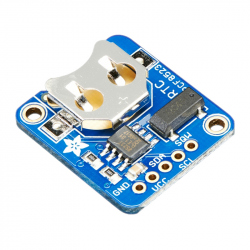Dupa plasarea solicitării de comandă, in sectiunea Istoric puteti vedea cate solicitări de comandă mai avem de procesat inaintea dumneavoastra
Program de lucru: Luni - Vineri 9:00 - 18:00, pauza 13:00 - 14:00.
Se efectueaza lucrari de mentenanta la site si pot aparea erori. In cazul in care intampinati erori va rugam sa reincercati mai tarziu.
Ridicarea personala este disponibila pentru comenzile achitate in avans. Se pot ridica dupa ce sunt pregatite.
Niciun produs
 Mărește
Mărește
Sursă Ridicătoare de Tensiune de 5V Pololu U3V12F5
0104110000037374
Produs nou
Pachetul contine: Sursă Ridicătoare de Tensiune de 5V Pololu U3V12F5
Restul produselor din imagini sunt folosite drept sugestie de prezentare.
Acest produs nu mai este in stoc
- Scrie o recenzie
- Elimina acest produs din lista mea de favorite.
- Adauga acest produs la lista mea de favorite.
- Imprimă
Informații
Caracteristici tehnice:
- Tensiune de intrare: 2.5V - 5V;
- Tensiune de ieșire: 5V;
- Curent maxim de intrare: 1.4A;
- Curent maxim de scurgere în gol: 2mA;
- Acuratețe tensiune de ieșire: 4%;
- Protecție la supratemeratură;
- NU are protecție la alimentare inversă;
- Eficiență de până la 90%;
- Dimensiuni: 13 x 8 x 3 mm.
Acest produs reprezintă o sursă de tensiune ridicătoare, ce funcționează în comutație, astfel că are o eficiență foarte bună și nu are pierderi, iar căldura disipată este mică.
Dimensiunile sursei sunt foarte mici, astfel că poate fi inclusă cu ușurință într-o gamă largă de proiecte. Este foarte utilă pentru a vă alimenta circuite de funcționează la 5V la baterii sau acumulatori de 3.7V, tensiunea de ieșire fiind fixă și stabilă.
Pentru mai multe detalii, consultați pagina producătorului.
Recenzii
Clienții care au cumpărat acest produs au mai cumpărat:
-

Rolă Fir...
Rolă Fir pentru Bobinaj Emailat de 0.1 mm (11.5 m)
$0.96
-

Header de...
Header de pini alb 2.54 mm (40p)
$0.24
-

Modul RTC...
Modul RTC Adafruit PCF8523
$10.80
-

Placă de...
Placă ideală pentru proiecte creative în...
$8.40
-

Comutator...
Comutator DIP Roșu (8p)
$0.96
-

Tastatură cu...
Tastatură cu 4 Taste
$1.20
-

Micro...
Micro Servomotor SG90 180° util pentru...
$2.88
-

Roată...
Roata pentru roboți Solarbotics RW2i are un...
$8.40
-

Motor...
Motor Brushless cu Mufe Banana MT2204 (Blocaj...
$14.40
-

Bară de...
Bară de LED-uri cu 4 Culori util pentru a...
$1.20








